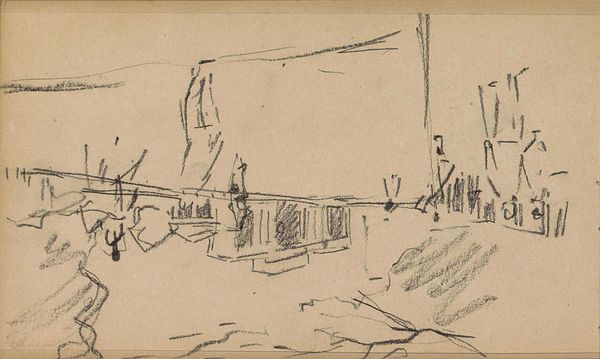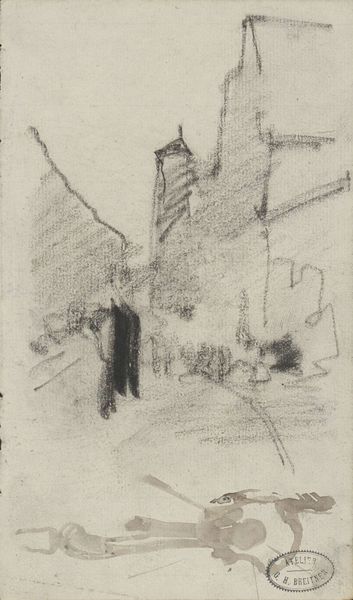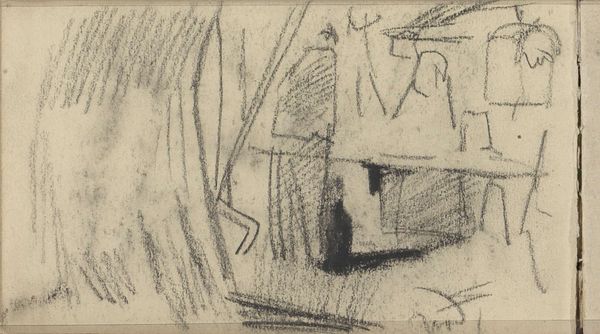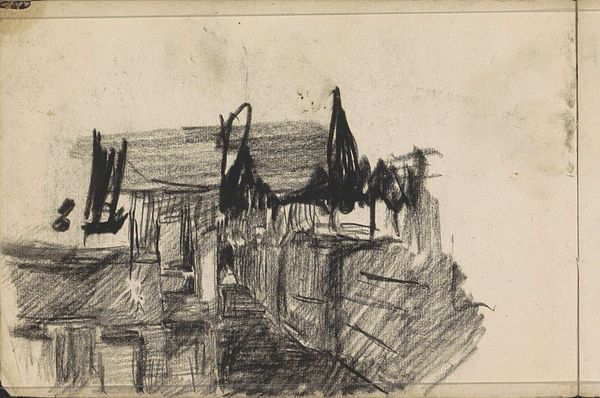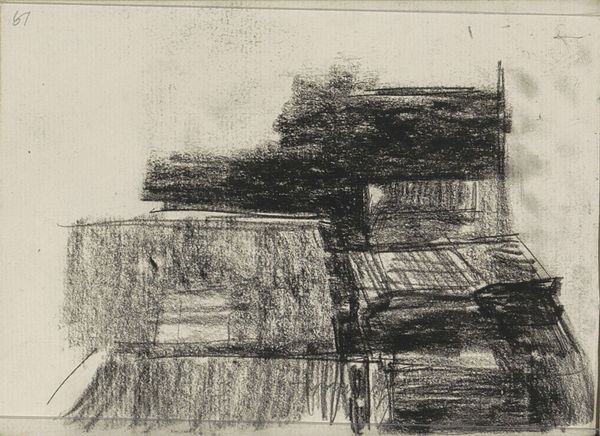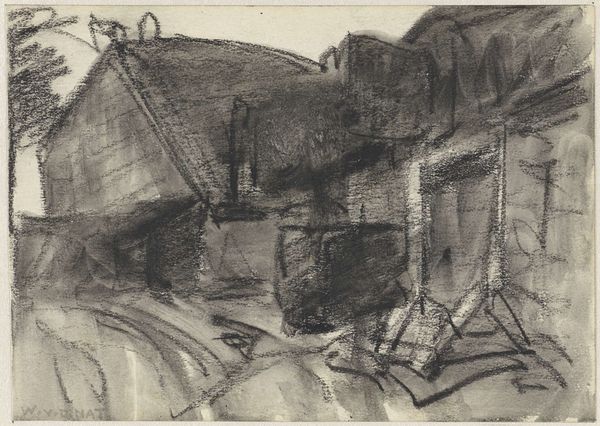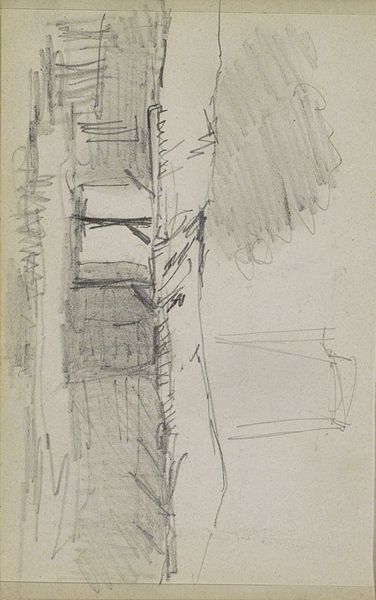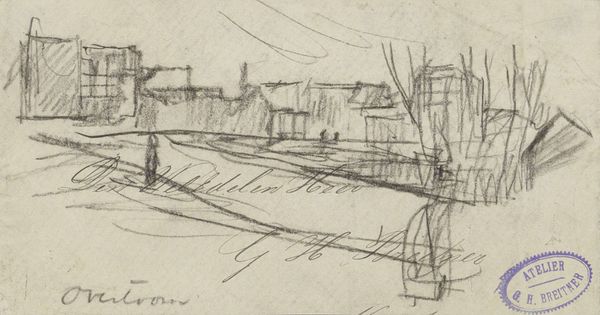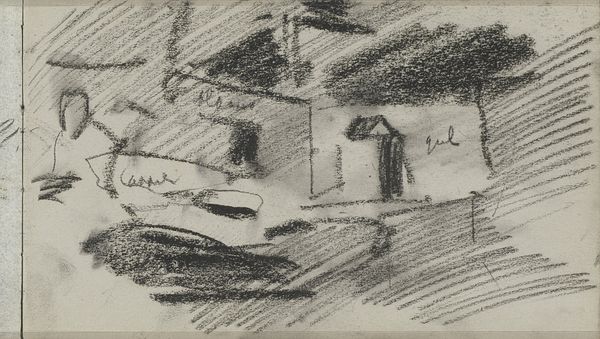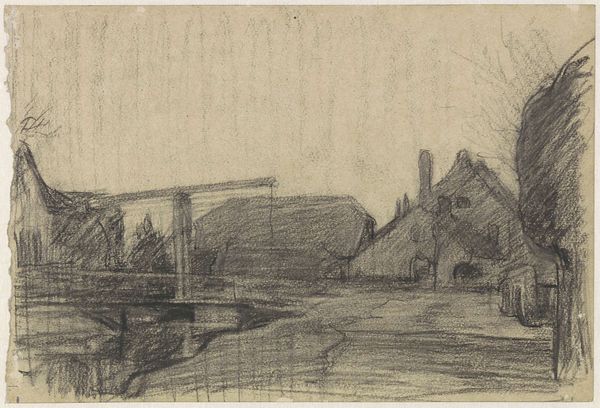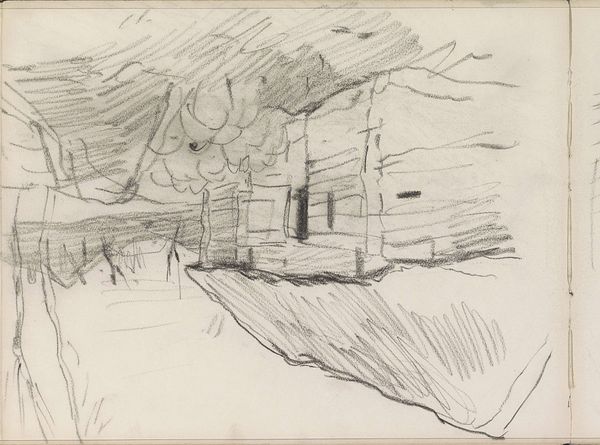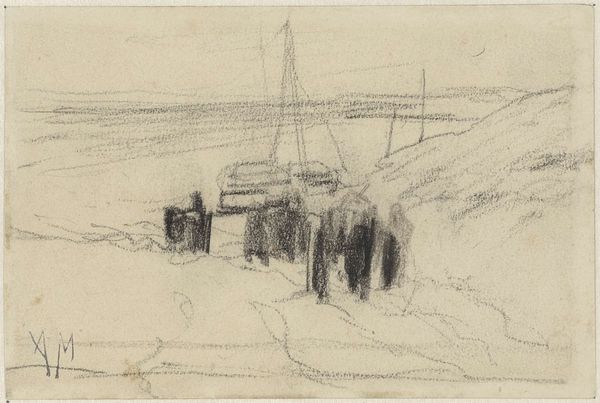
drawing, pencil, charcoal
#
drawing
#
impressionism
#
landscape
#
pencil
#
charcoal
#
realism
Copyright: Rijks Museum: Open Domain
Curator: This drawing, "Boerderijen in een landschap," or "Farmhouses in a Landscape," was created by George Hendrik Breitner around 1883 to 1885. You can find it here at the Rijksmuseum. Breitner employed pencil and charcoal to capture this scene. What strikes you most about it initially? Editor: It feels unfinished, but somehow that adds to its charm. There’s a directness, an honesty to the marks. The heavy charcoal at the base grounds the whole image. It’s simple, yet the contrast is impactful. Curator: That unfinished quality aligns with Impressionistic principles – capturing a fleeting moment, an impression. Breitner was deeply interested in depicting everyday life and scenes as they unfolded around him, often focusing on working class subjects or urban environments. This more rural image perhaps captures his early experiments. Editor: There's something about the flag atop the building. It’s not just a flag; it feels symbolic, almost a signifier of place, identity or even ownership. The dark hatching marks suggest resilience, something that withstands harsh elements. Also notice the telephone pole on the left, and how it is set off from older ways of life with the barns, hinting at changing society. Curator: It’s intriguing how Breitner condenses details; these architectural details represent cultural values. The realism lies less in exact replication, and more in conveying the social reality of the era through carefully chosen imagery. As a realist, Breitner wasn’t afraid to depict modernity, introducing signs of technological progress. Editor: The rooftops give a nice texture – the darks indicating deep age, and hard lives, with a sharp linear precision for newer barns. And this direct contrast evokes the symbolic and visual differences between history, represented in the older, darker materials, with modernity, the newer and lighter features of this landscape. Curator: His contemporaries regarded his raw depictions of Amsterdam life with suspicion. Photography was developing around the same period, capturing modern themes, just like drawing was becoming more acceptable. But it’s the quickness, immediacy, of works like these that offer something photograph never could – a direct reflection of the artist's perception. Editor: I find the way Breitner focuses not on a picturesque scene but an ordinary one so revealing. It really allows a space for contemplation. The scene almost acts as a portal for our thoughts. It creates the scene as well as leaves space for the viewers interpretations. Curator: Absolutely. Breitner's landscape isn't just about buildings. It prompts us to contemplate how we engage with the rapidly evolving social-economic world, a concept relevant then, as now.
Comments
No comments
Be the first to comment and join the conversation on the ultimate creative platform.

